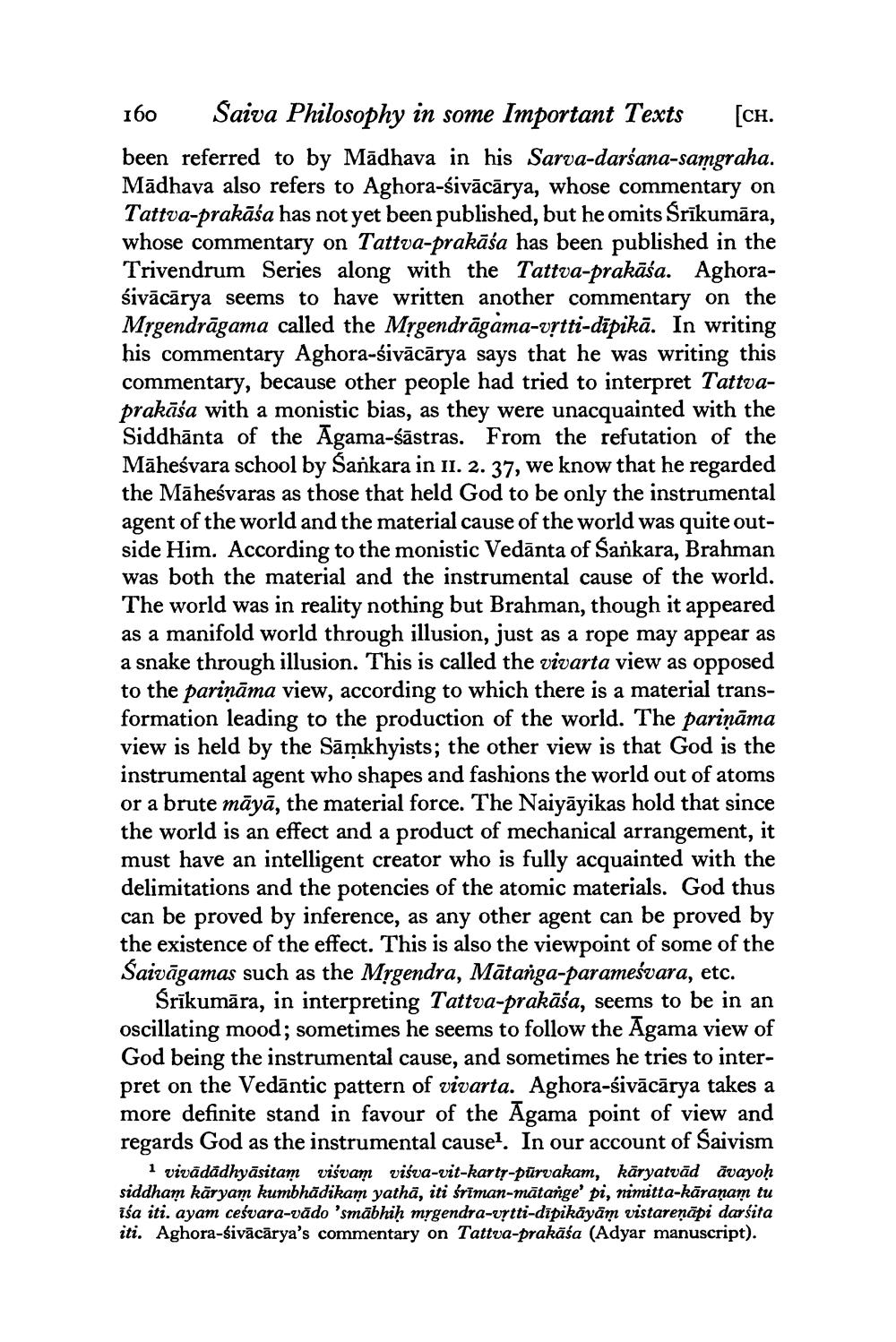________________
160 Saiva Philosophy in some Important Texts [CH. been referred to by Mādhava in his Sarva-darśana-samgraha. Mādhava also refers to Aghora-śivācārya, whose commentary on
Tattva-prakāśa has not yet been published, but he omits Śrīkumāra, whose commentary on Tattva-prakāśa has been published in the
Trivendrum Series along with the Tattva-prakāśa. Aghoraśivācārya seems to have written another commentary on the Mrgendrāgama called the Mrgendrāgama-vrtti-dīpikā. In writing his commentary Aghora-śivācārya says that he was writing this commentary, because other people had tried to interpret Tattvaprakāśa with a monistic bias, as they were unacquainted with the Siddhānta of the Agama-śāstras. From the refutation of the Māheśvara school by Sankara in 11. 2. 37, we know that he regard the Māheśvaras as those that held God to be only the instrumental agent of the world and the material cause of the world was quite outside Him. According to the monistic Vedānta of Sankara, Brahman was both the material and the instrumental cause of the world. The world was in reality nothing but Brahman, though it appeared as a manifold world through illusion, just as a rope may appear as a snake through illusion. This is called the vivarta view as opposed to the pariņāma view, according to which there is a material transformation leading to the production of the world. The pariņāma view is held by the Sāmkhyists; the other view is that God is the instrumental agent who shapes and fashions the world out of atoms or a brute māyā, the material force. The Naiyāyikas hold that since the world is an effect and a product of mechanical arrangement, it must have an intelligent creator who is fully acquainted with the delimitations and the potencies of the atomic materials. God thus can be proved by inference, as any other agent can be proved by the existence of the effect. This is also the viewpoint of some of the Saivāgamas such as the Mrgendra, Mātanga-parameśvara, etc.
Śrīkumāra, in interpreting Tattva-prakāśa, seems to be in an oscillating mood; sometimes he seems to follow the Agama view of God being the instrumental cause, and sometimes he tries to interpret on the Vedāntic pattern of vivarta. Aghora-śivācārya takes a more definite stand in favour of the Agama point of view and regards God as the instrumental cause. In our account of Saivism
1 vivādādhyāsitam viśvam visva-vit-karty-pūrvakam, kāryatvād avayoh siddham kāryam kumbhādikam yathā, iti śrīman-mātange' pi, nimitta-kāranam tu isa iti. ayam ceśvara-vādo 'smābhih mrgendra-vrtti-dīpikāyām vistarenāpi darsita iti. Aghora-śivācārya's commentary on Tattva-prakāśa (Adyar manuscript).




